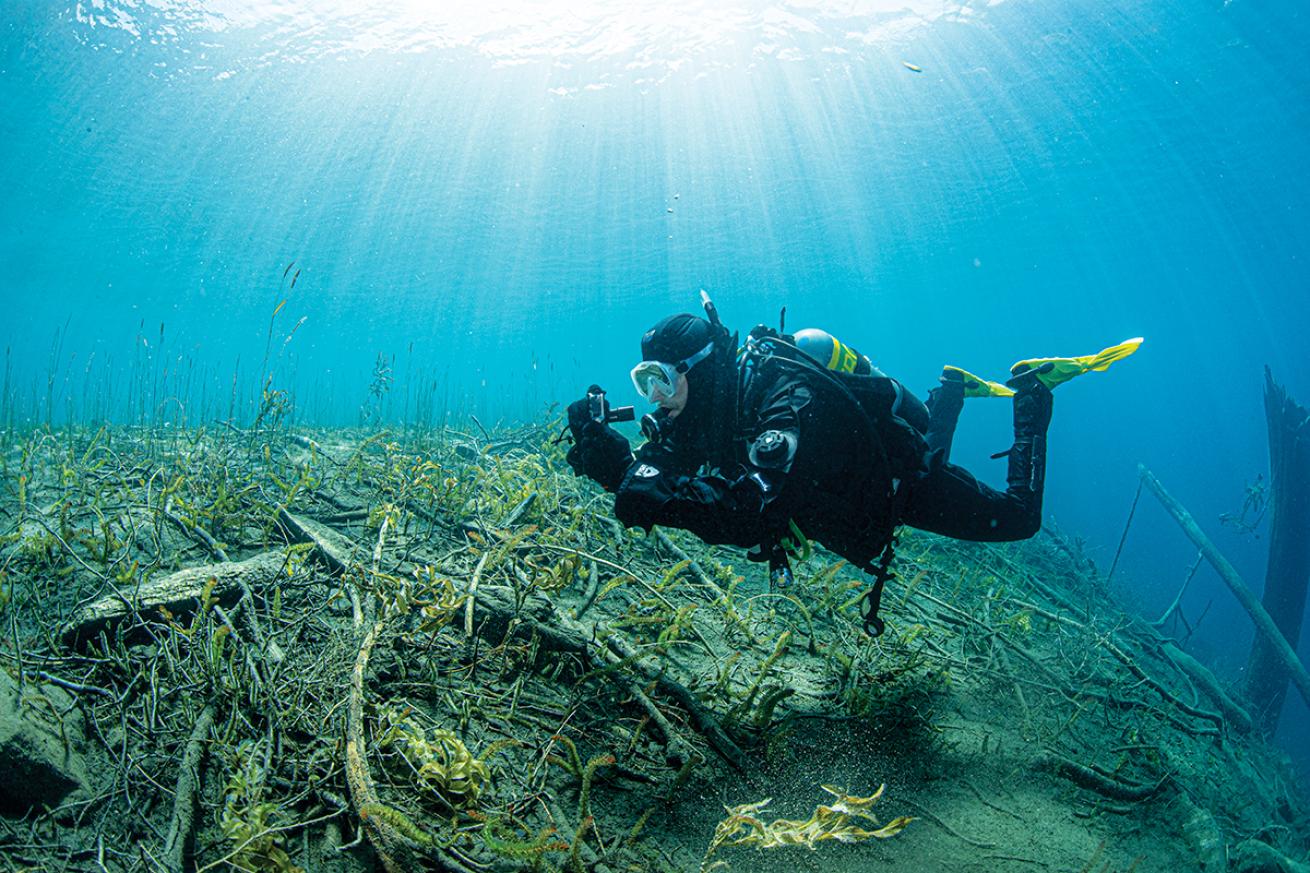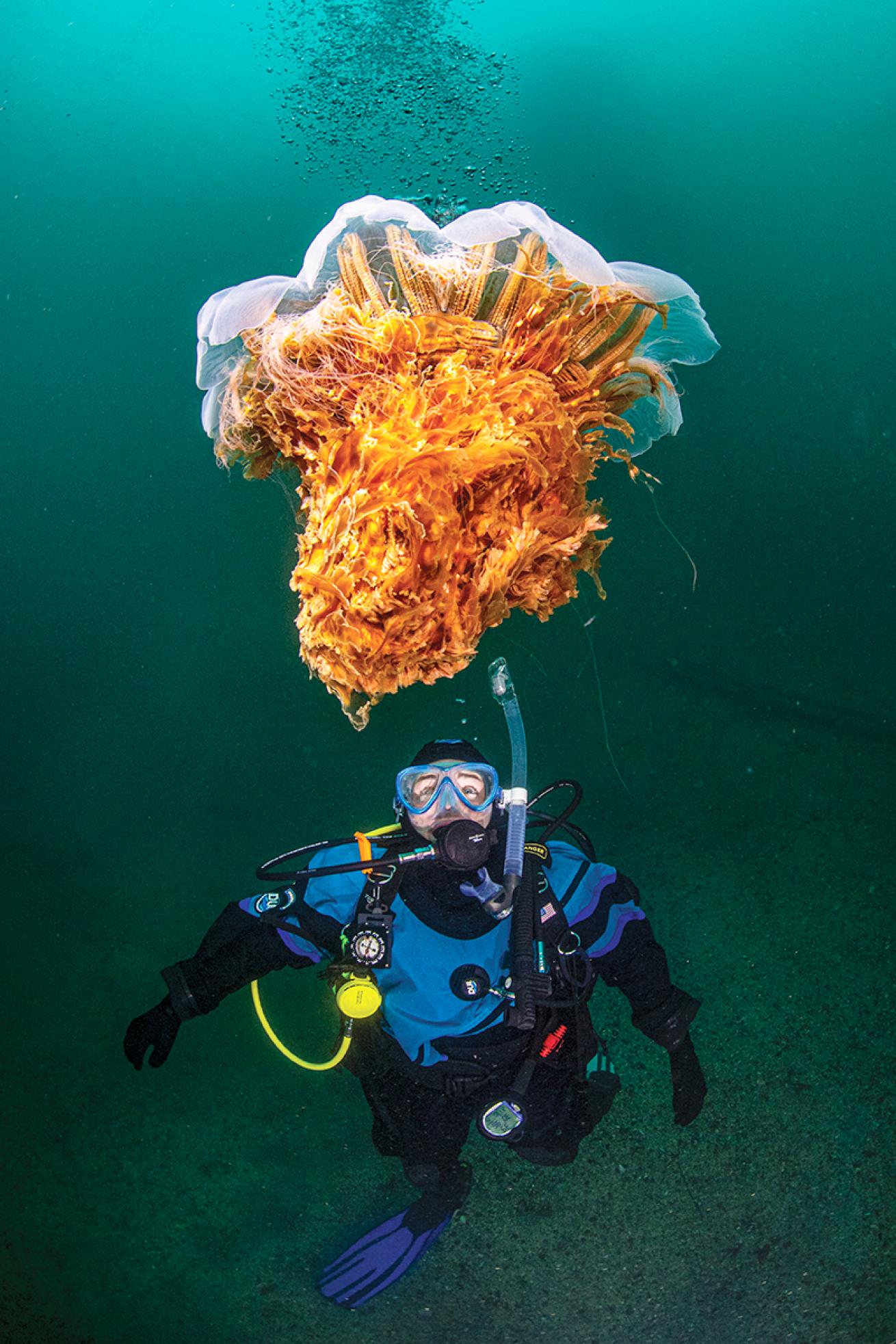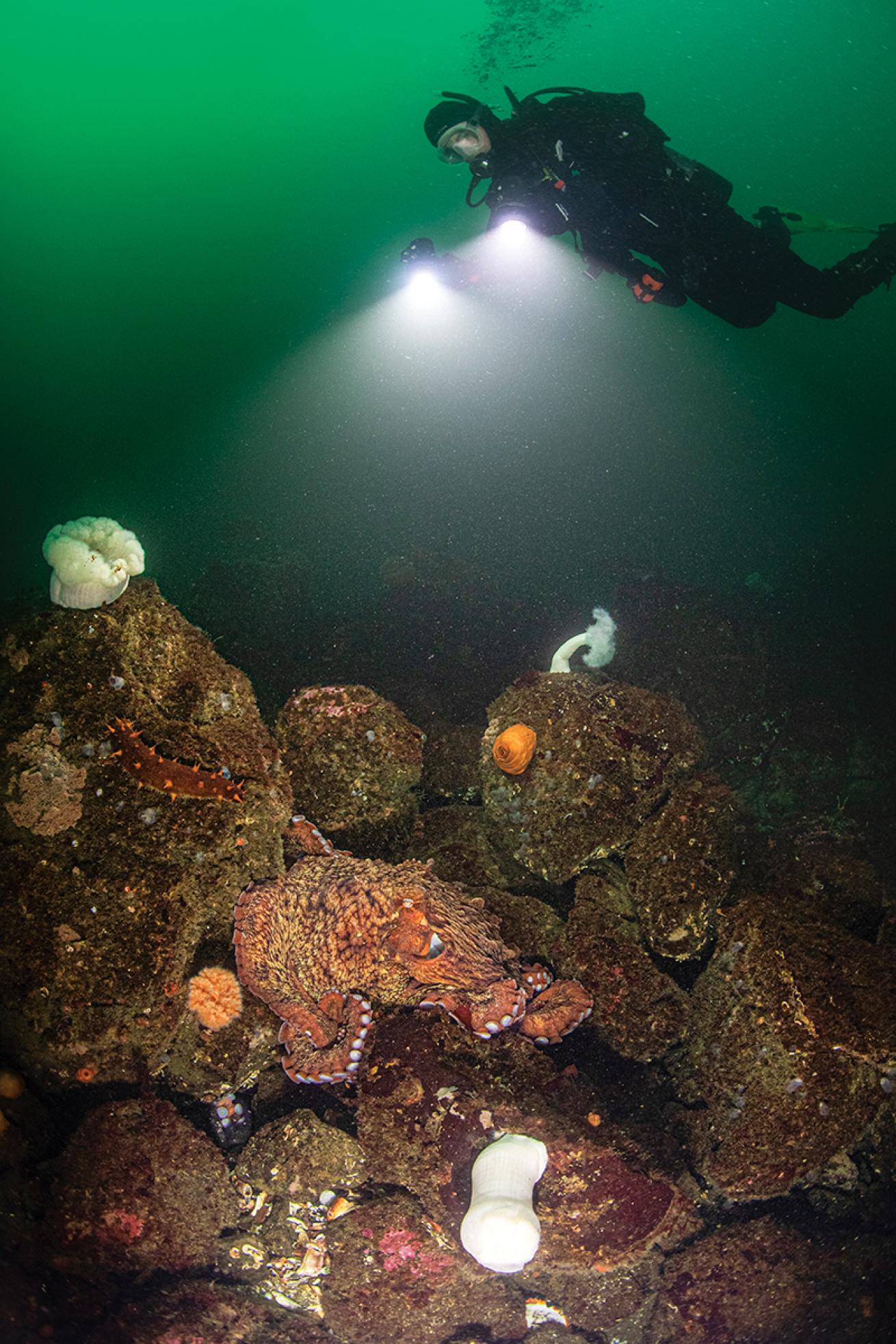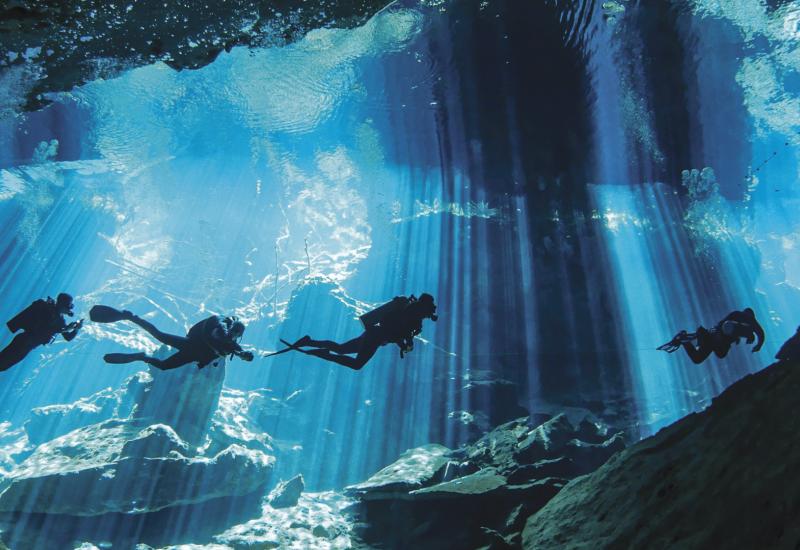Drysuit Diving Myths, Busted

Annie CrawleyDrysuits let you embrace year-round diving, wherever you plan to submerge.
Ten years ago I moved from Southern California to the Pacific Northwest. Trading palm trees for pines, I embraced year-round cold-water diving. Salish Sea temperatures peak in summer at 56 degrees F; winter water temps dip to 44. Year-round, it’s drysuit country. From the Arctic to Antarctica, Iceland to New Zealand, PNW to British Columbia, drysuit diving has become one of the greatest skills a diver can develop because it opens up oceans, cold-water lakes and altitude diving to you.
Many beginner divers create myths around drysuit diving, thinking it’s for tec divers or professionals. Truth be told, drysuit diving is for people who want to be warm and comfortable, not cold. In many locations, it gives divers access to diving every day of the year. In the long run, it’s more cost-effective than wetsuit diving. Drysuits benefit you on trips with a broader range of temperatures, like a 10-day trip in the Sea of Cortez, where water temps can be 55 to 72 in the coldest times of the year. You would potentially need two or three wetsuits—or just one drysuit with a thermal layer. Depending on the type of suit you choose, they can be less expensive—or not much more—than a custom wetsuit.
Another drysuit-diving myth is that it’s hard to do. Here in the PNW, I teach kids and teens to dive in drysuits during their open-water course. It’s like any new piece of gear: If you learn to use it properly from the start, it’s easy. During pool sessions, we teach warm-water diving in boardshorts or wetsuits. When we transition to open water, we don drysuits and have one extra pool session. It takes about five to six dives to become really comfortable diving in a drysuit because establishing neutral buoyancy, ascending, descending, finning and basic body techniques vary. If you are traveling to get your drysuit certification, consider pairing it with peak performance buoyancy or a navigation specialty. Many cold-water destinations, such as the Arctic or Antarctica, require a minimum of 20 logged drysuit dives.

Annie CrawleyDrysuits are a must for appreciating the treasures of the Pacific Northwest, like a lion’s mane jelly.
Diving Unlimited International (DUI) changed drysuit diving with three major innovations. It was the first company to create a self-donning suit, a women’s suit and a zip-seal system for wrists and neck that divers could change on the fly. The front-zip suit is easier to get on and off for a variety of body shapes because there is more material in the torso. Back-zip suits are also great—it really depends on the fit of the suit for your body shape.
In order to figure out what’s the best drysuit for you, visit your local retail dive center. If you purchase a drysuit, you will dive more. Your local professionals will help you choose the right material, seals and accessories. If you purchase a custom suit, they measure you according to the manufacturer’s specifications. There are many different types of material, including crushed neoprene and coated fabrics. Some have built-in boots, and others a sock material you insert into an external boot. Wrist and neck seals come in a variety of materials, from latex to silicone and crushed neoprene. Bring your fins and BC to try on suits. You want to make sure your fin works for your drysuit boot, and that your BC has enough lift for drysuit diving.
You also need to consider hoods, denser thermal undergarments and dry gloves. When our heads are warm, our bodies are warm; invest in a drysuit hood. I wear a 10 to 11 mm hood year-round that keeps me warm in the Arctic.

Annie CrawleyGetting cozy in a drysuit unlocks new encounters.
What you wear under your drysuit is as important as your drysuit. The Fourth Element Diving Arctic undergarment is No. 1 on the market. Today’s higher-density materials have less bulk, therefore you are warmer with less weight needed. When I dive in the Arctic I need dry gloves; in the PNW I dive 5 mm gloves year-round. Your personal thermal characteristic will influence what you need from your head to your feet. There are drysuit specialty socks, heated undergarments, and many other advancements in our industry to help keep you warm. You can even install a P-valve for those longer dives or if you have a weaker bladder. Always pee right before putting on your drysuit.
You will learn tricks and tips during your drysuit diver course including how to mitigate overheating versus hypothermia. We dress not only for the temperature of the water we dive but consider our outside conditions. In summer, we need to stay cool before donning our gear. In winter we need to stay warm before and after diving. We often bring hot water to the dive site to warm up hood and gloves before dives.
Depending on the suit and the materials you choose, with proper care, maintenance and storage, your drysuit will last years. You might have to replace seals, fix a leak or replace a zipper after a couple hundred dives. By taking your time and working with a dive professional, after a few days of diving in a drysuit, you will embrace being warm and dry in cold water and love it too.
PRO TIP
Dive with a professional until you are comfortable with weighting and understand neutral buoyancy in your drysuit. The first time you use steel tanks and extra weight, you may turtle, meaning you flip on your back on the bottom. Use your arms to flip yourself over and reposition the tank on the middle of your back.










